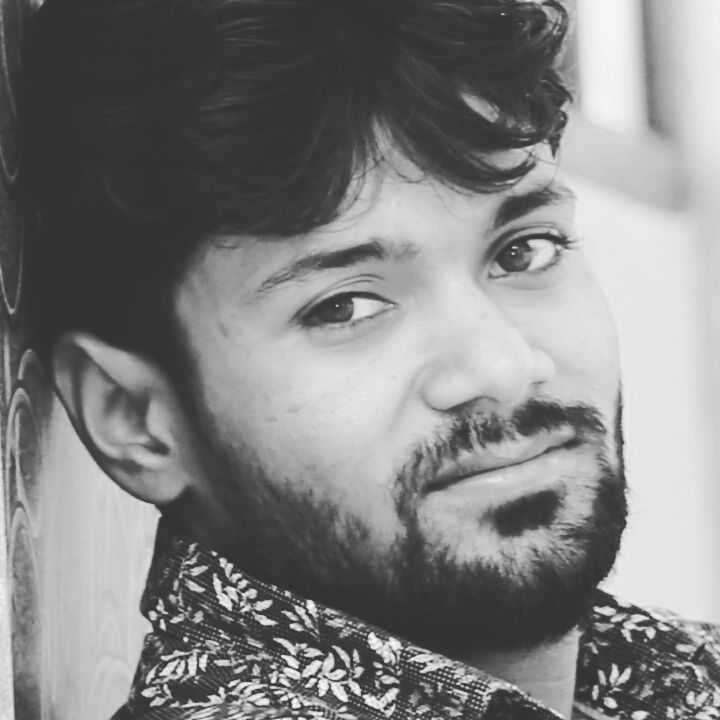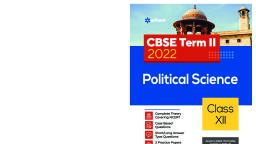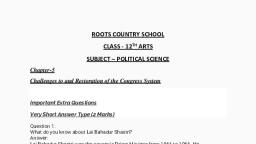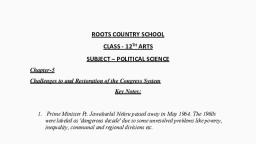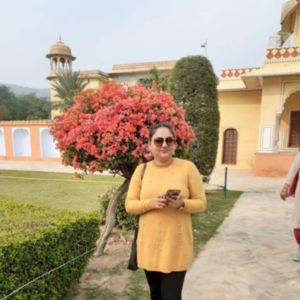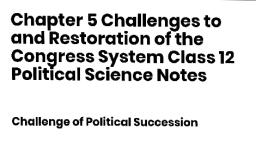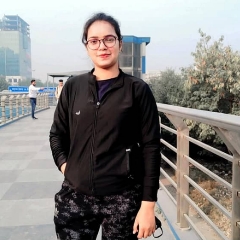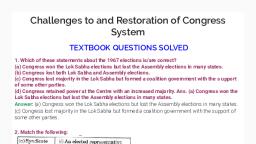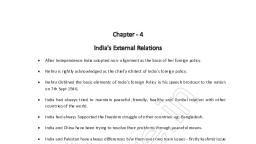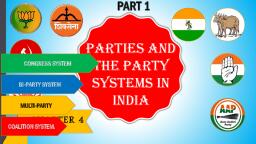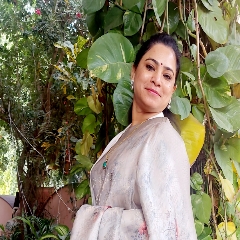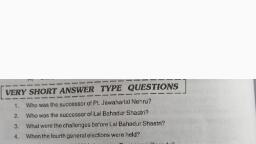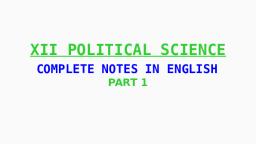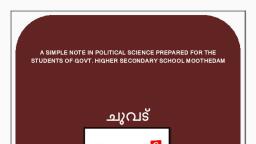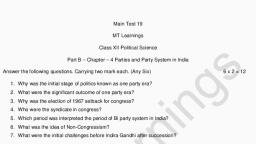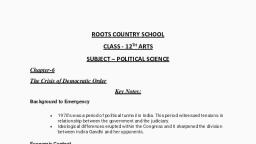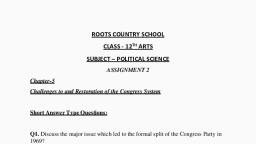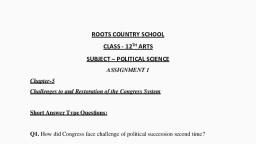Page 1 :
& myCBSEguide.com, , A Complete guide for CBSE students, , CBSE Class 12 Political Science, Revision Notes, Chapter-5, Challenges to and Restorations of the Congress System, , 1. Prime Minister Pt. Jawaharlal Nehru passed away in May 1964. The 1960s were labeled, as ‘dangerous decade’ due to some unresolved problems like poverty, inequality,, communal and regional divisions etc., , 2. India mainly faced two challenges from 1964 to 1966 during Lal Bahadur Shastri's reign, like Economic Crisis’ due to Indo-China War of 1962 and Indo-Pak War of 1965 and failed, Monsoons, droughts and food crisis which was symbolised as a famous slogan to resolve, the issues like ‘Jai Jawan Jai Kisan’., , 3. The Congress Party faced the challenge of political succession for theLal Bahadur Shastri, was a non-controversial leader from Uttar Pradash.Second time after the death of Lal, Bahadur Shastri with an intense competition between Morarji Desai and Indira Gandhi to, resolved through a secret ballot among Congress MPs. Indira Gandhi defeated Morarji, Desai and a peaceful transition of power was seen as a ‘Sign of Maturity of India's, Democracy’., , 4. The government of Indira Gandhi decided to devalue the Indian rupee in order to check, economic crisis of 1967. Consequently, one US dollar could be purchased for less than, Rs. 5 after devaluation which cost more than Rs. 7. The economic situation triggered off, price rise., , 5. The Congress Party's decision of devaluation gave birth to the concept of NonCongressism with different programmes and ideologies to form anti-Congress fronts. It, was claimed to be necessary for democratic purposes., , 6. The fourth general election was held in 1967, not be in favour of Congress. The political, leaders like Kamraj in Tamilnadu, S.K. Patil in Maharashtra, Atulya Ghosh in West Bengal, and K.B. Sahay in Bihar were defeated alongwith majority lost mother states also for the, very first time any non-Congress party has secured majority including coalition, government consisting of different non-Congress parties which were termed as ‘Political, earthquake’., , 7. The election of 1967 brought the phenomenon of coalitions which was formed together, , Material downloaded from myCBSEguide.com. 1/3
Page 2 :
myCBSEguide.com, , eS, , 10., , 11;, , 12., , 43., , by joint legislature parties to be called SVD i.e. Samyukt Vidhayak Dal. The SVD in Bihar, included the two socialist parties-SSP and PSP alongwith CPI on the left and Jana Sangh, on the right. In Punjab it was called popular United Front and comprised the two rival, Akali Parties at that time., , The constant realignment and shifting political loyalties in this period(1967) gave rise to, the expression ‘Aya Ram,Gaya Ram’., , Immediately, after 1967, Indira Gandhi faced two challenges to build her independence, from ‘Syndicate’ and to regain ground which were lost in 1967 elections by Congress. And, Indira Gandhi adopted a very bold strategy as she converted it into ideological struggle,, launched a series ofmitiatives and got the Congress Working Committee to adopt 'Ten, Point Programme’ in 1967 including social control of Banks, Nationalisation of General, Insurance, Ceiling on Urban Property and Income, Public Distribution of Food Grains,, Land Reforms etc., , Syndicate : It was the informal name given to a group of Congress leader like K. Kamraj,, S.K.Patil, N. Sanjeeva Reddy, Atulya Ghosh who were in control of Party as organisation, i.e. within Congress. Syndicate had a greater say in Indira Gandhi's first council of, Ministers and in Policy formulations and implementations. After split, Congress (0) and, Indira led - Congress (R) formed which won the popularity after 1971., , The formal split in Congress (Syndicate and Indira Gandhi) came into open in 1969 on, nomination of candidate for president's post. Diplomatically, Indira Gandhi's candidates, won over syndicate's candidate (V.V. Giri over N. Sanjeeva Reddy), which formalised the, split in Congress into two separate parties i.e. Congress (0) i.e. organisation led by, syndicate known as a ‘Old Congress' and Congress (R) t.e. requisitionists led by Indira, Gandhi known as 'New Congress’., , Everyone believed that real organisational strength was under command of Congress (0),, on the other hand, all major parties like SSP, PSP, Bharatiya Jana Sangh, Swatantra Party, and Bharatiya Kranti Dal also formed ‘Grand Alliance’ against Indira Gandhi with a, common programme of ‘Indira Hatao’., , Garibi hatao : Indira Gandhi captured this famous slogan in election in 1971.Through, garibi hatao Indira Gandhi tried to generate a support base among the disaduantaged,, especially among the landless laboures, Dalits and adivasis, minorities, women and the, unemployed youth as well as focused on growth of public sector, imposition of ceiling on, rural land holdings and Urban property and removal of disparity etc and succeeded to, , Material downloaded from myCBSEguide.com. 2/3
Page 3 :
& myCBSEguide.com, , A Complete guide for CBSE students, , build an independent nationwide political support base durmg election contest of 1971., , 14. Indira Gandhi did not revive old Congress Party but she re-invented the party by forming, an entirely different popular party to accommodate some social groups, the poor, the, women, the dalits, adivasis and the minorities. Thus, Indira Gandhi restored the Congress, system by changing the nature of Congress system itself., , Material downloaded from myCBSEguide.com. 3/3
